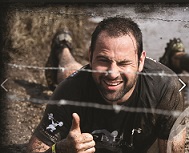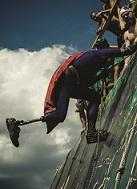
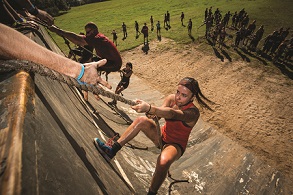
A Brief History
‘Explosive growth’ might sound like hyperbole until you consider the incredible gains in participation in a relatively short time. A few events were put on since the 1990s, such as the Camp Pendleton Mud Run in San Diego, California, and the Roanoke Marine Corps League Mud Run in Virginia, but it really wasn’t until the launch of Spartan Race, Warrior Dash, and Tough Mudder (known in obstacle course racing parlance as The Big Three) that the sport was born and saw simultaneous growth.
The Numbers
In April of 2014, Running USA released, for the first time, in-depth research on what it termed “non-traditional races.” (Loosely defined, that would be defined as footraces that vary from the classic, timed events such as 5Ks, 10Ks, marathons, etc.) These include themed (and typically untimed) events, such as zombie runs, color runs and glow in the dark races; however, ‘non-traditional events’ also included obstacle course racing (OCR for short).
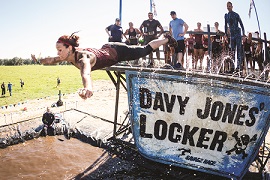 The report noted, that over the space of five years, “the number of estimated finishers in U.S. non-traditional events has grown from low six figures in 2009 to a staggering 4 million in 2013, a nearly hard-to-believe 40-fold increase. In addition, a handful of mass participation adventure series in 2009 has rapidly expanded to more than 35 non-traditional or themed running series.”
The report noted, that over the space of five years, “the number of estimated finishers in U.S. non-traditional events has grown from low six figures in 2009 to a staggering 4 million in 2013, a nearly hard-to-believe 40-fold increase. In addition, a handful of mass participation adventure series in 2009 has rapidly expanded to more than 35 non-traditional or themed running series.”
Running USA’s report also pulled in research from other groups. According to the Outdoor Industry Association (OIA), within the past five years, participation in adventure racing was up 211% and ranked in the Top 5 of most popular outdoor activities tried by first-timers. In 2012, the OIA predicted 2.2 million participated in adventure racing.
Everyone reading this knows sports tourism is continuing to grow. OCR athletes, like many others, have a fondness for destination races. Athletes travel around the country for their races, and even abroad to places like Nicaragua and The United Kingdom.
Reasons for Growth
There are several theories regarding the reasons for the sudden growth of OCR. They include timing: after decades of exercise becoming easier, people now have a desire to take on activities that are more challenging and less comfortable. To go a step further, there is a theory that OCR taps into the primal need to crawl around in mud. (In fact, in a book called Spartan Up, author Joe Desena discusses the psychology of the race and its appeal to these baser instincts).
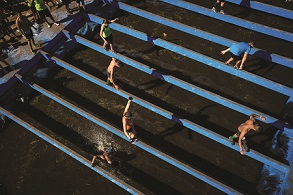 But while people may be searching for bigger challenges, statistics tell us they’re also looking for someone else to do them with. Maybe misery loves company but one thing is sure: obstacle races tap into the wish to be part of a community.
But while people may be searching for bigger challenges, statistics tell us they’re also looking for someone else to do them with. Maybe misery loves company but one thing is sure: obstacle races tap into the wish to be part of a community.
Whereas a traditional timed race is ‘every man for himself,’ the OCR event differs, being more team- and friendship-oriented. Running USA quoted a statistic from the ACTIVE.com endurance community panel survey of a 1,200-plus category known as MOB-sters (mud, obstacle, beer racers). According to that survey, “the top three motivators to participate in these non-traditional events included fun, uniqueness and being with friends.” In fact, greater than 50% of those surveyed reported that they had participated with one or two friends and over 40% stated they were part of a team. People also are planning ahead: 64% planned to participate in a MOB event in the next 12 months.
Spreading the Word
An undeniable factor in the rise of OCR is social media. OCR would not have grown like this, had it not been for Facebook. It's where you post a picture of your awesome muddy accomplishment, it's where the communities organically sprung up around the country and all over the world and it's now where the races advertise to their target market. In fact, in its report, Running USA quoted Warrior Dash's Race Director, Munirah McNeely, who said social media was their lifeline to the racing community, and that "I think that's really allowed for growth to occur as quickly as it has."
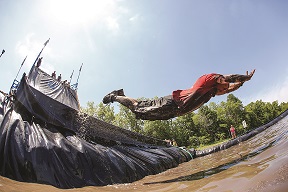 Problems in the Industry
Problems in the Industry
The huge growth in OCR has brought its own set of problems. Sometimes, companies see the potential for income and publicity, but do not understand what the enormous undertaking involved in putting on a good OCR event. This is not a traditional 5K. It includes a meticulously planned course with well-built obstacles and safeguards for all participants. All that requires an investment, and a substantial one at that.
Unfortunately, not everyone allocates money wisely. Some races start publicity campaigns and open registration but never get off the ground because of the capital needed; others enjoy initial success but expand too rapidly and have to cancel future events. And then there are a few that are thought up by outright scam artists. As in any other boom market, there are a lot of Johnny-come-latelies that don't or can’t cut it.
The sad news is that this brings down the whole community. A person who is dipping their toe into the muddy waters of an OCR for the first time, and whose event is cancelled (or worse, cancelled without a refund) may not want to try the sport again.
The brighter side of this is that our previously mentioned friends, social media and the Internet, can provide beginners (as well as experienced racers) with reviews, news and more. Communities such as GORMR and the New England Spartans are good examples of places racers are turning for this information.
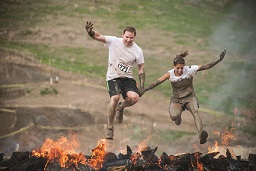
So what makes a good race? A well-built course and obstacles, with good planning and safety measures, as mentioned before. There have been several smaller races other than the Big Three that have found success either locally or regionally. Many include locations where the obstacles are now permanent fixtures (as opposed to things that are built for the event and dismantled later). These locations include St Clair Scramble in Alabama, Shale Hill in Vermont, Dirt Runner in Illinois and Rock On Adventures in Florida.
Having a permanent venue is not required, though. There are other race series such as F.I.T. Challenge in New England and Mud Endeavor in Florida. Both of these companies have done a fantastic job of providing participants a quality race course, helpful and enthusiastic staff and volunteers, great race-day atmosphere with a fun festival/spectator area and great swag. (Well-made and original T-shirts and medals are also unbelievably important to the OCR community, so don’t overlook those).
Something too often overlooked when it comes to putting on a great event is volunteer and staff support. The OCR event director will need plenty of both. Here are a few things we have learned over the years:
Counting on 100% of volunteers to show up and then stay for their entire shift is short-sighted and unrealistic.
Whatever number of hired staff is needed, hire 110% of that number to help cover the potential for cancellations and latecomers.
Whatever unpaid volunteers is planned for, schedule twice as many. (At least half, if not more, of those volunteers may not be able to show up or will have to leave early).
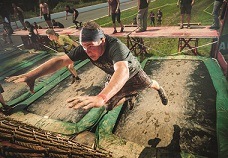
Take money for parking
Process cars for parking
Bag check
Handle registration and check-in (including separate lines for race day registration, as well as those with registration issues)
First aid/medical support
All water and aid stations
Note: Each obstacle needs one to three staffers, depending on type of obstacle; some, such as those where participants will be submerged, may need even more, or may need staff with specialized equipment or training (lifeguards, SCUBA, etc.)
Finish line team (including swag hand-out, food/beverage hand-out, and any other finish line items)
That’s really just scraping the (muddy) surface of our industry. There’s no doubt that obstacle racing is expanding. Will it keep growing? We certainly hope so. For now, it’s a booming market, thanks to well-planned events and the athletes who seek them out.

